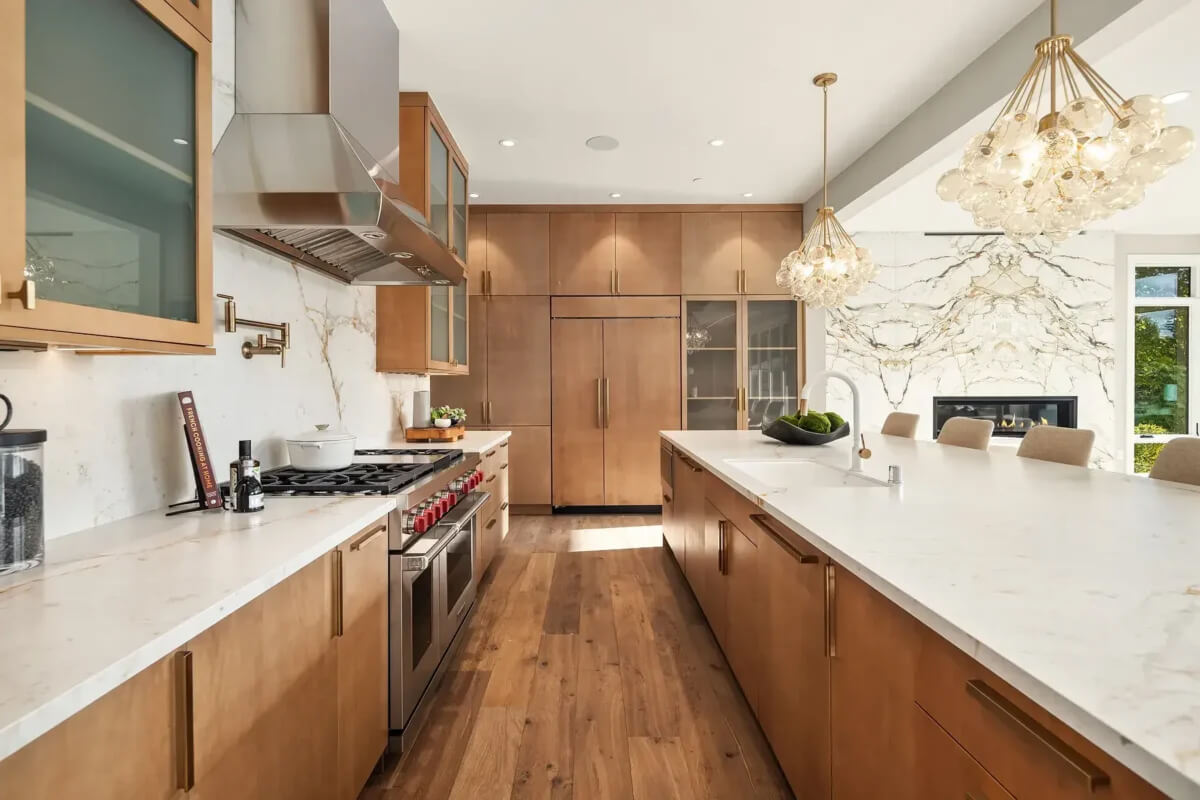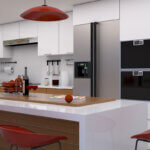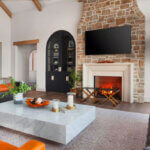Kitchen renovation transforms your home’s most important space while adding value and functionality. The average kitchen renovation costs between $14,593 and $41,544, with most homeowners spending around $26,976, though recent data shows the median spend has increased to $60,000. Smart planning, proper layout design, and trendy upgrades help you get the best return on your investment.
Budget Planning & Average Costs
Know your budget before you start. Kitchen renovations range from $15,000 to $50,000 for full updates, or $150 to $250 per square foot. Understanding the financial commitment of home improvement helps set realistic expectations.
Minor kitchen remodels average $27,000 and warrant 96% ROI, while major midrange projects cost around $80,000 with 49% ROI. According to the National Kitchen & Bath Association’s 2025 report, medium kitchens average $71,159 and large kitchens reach $137,228. Your location affects costs significantly. San Francisco projects range $40,000-$72,000, while Denver averages $30,000.
Cabinets eat the biggest chunk of your budget—a crucial component of any kitchen makeover. Cabinet replacement costs $4,500 to $15,000 for most kitchens, but can reach $36,000+ for high-end custom work. Appliances follow close behind as essential kitchen fixtures. A standard appliance package with dishwasher, microwave, range, and refrigerator costs $2,500 to $6,800 installed. Countertops and flooring complete the major expenses, typically running $1,500 to $6,000 each depending on materials chosen.
Functional Layout & Safety Essentials
Good kitchen layout planning starts with the work triangle. This design principle connects your sink, stove, and refrigerator in an efficient pattern—the spatial organization that defines the culinary workspace.
Work Triangle & Flow
Each side of the triangle should measure 4-9 feet, with the total perimeter between 13-26 feet. Keep clear paths between the three points without obstacles like islands or tall cabinets blocking movement. Modern kitchens adapt this concept for larger spaces and multiple cooks.
Work aisles need at least 42 inches for one cook or 48 inches for multiple people. The triangle works best for single cooks but may not suit social kitchens where many people work together. Consider kitchen zones instead of strict triangles for large or open-concept spaces—this multifunctional area approach accommodates today’s domestic space needs.
Permits and Code Basics
Don’t skip permits for electrical, plumbing, or structural changes. Permit costs range $2,300 to $5,750 depending on your project scope. Proper ventilation prevents grease buildup and improves air quality. Moving gas lines costs $375 to $750 if you relocate appliances.
Safety codes require GFCI outlets near water sources and proper clearances around appliances. Plan for adequate lighting over work areas and ensure your electrical system can handle new appliance loads—essential building standards for any residential construction project.
Trend-Smart Design Choices
2025 brings exciting kitchen design trends that blend function with style. Dirty kitchens lead the pack, while sustainable materials gain popularity in this evolving interior design landscape.
“Dirty Kitchen” & Multi-Zone Planning
The “dirty kitchen” trend creates a secondary space for messy food prep and cleanup, hidden from the main entertaining area. These separate rooms include small appliances, sinks, dishwashers, and storage to keep your main kitchen pristine for guests. This concept represents the hypernym of specialized cooking spaces, contrasting with the traditional single-room approach.
Zillow reports an 8% increase in listings featuring second kitchens compared to last year. You can create this effect through smart design even without adding rooms – separate zones through layout and visual barriers. Perfect for busy families who cook often but want clean spaces for entertaining.
Eco-Friendly Swaps & Aesthetic Updates
Sustainable kitchens dominate 2025 trends with environmentally conscious design choices. Bamboo, reclaimed wood, recycled glass, and stone finishes add natural beauty while reducing environmental impact. Energy-efficient appliances and recycled materials make green choices easier than ever.
Bold colors replace all-white kitchens, with greens leading the trend from sage to emerald, as 52% of design professionals say bright hues and earthy tones of the 1970s are making a comeback. Dark-stained wood cabinets return, offering sophistication over painted finishes. Mixed materials in backsplashes create unique statements, with 67% of designers favoring blended textures and patterns.
Avoiding Common Renovation Pitfalls
Learn from others’ mistakes to save money and frustration. Poor planning causes the most expensive problems in any remodeling project.
Don’t ignore infrastructure during cosmetic updates. Moving electrical or plumbing adds significant costs, with rewiring averaging $2,130 including labor. Skipping permits creates legal and safety issues later. Choose durable materials over trendy options that date quickly—the antonym of timeless design.
92% of homeowners face challenges during renovation projects, with one-third struggling to find suitable service providers. Measure twice, order once. Wrong cabinet sizes or appliance dimensions delay projects and increase costs. Set aside 10-20% extra budget for unexpected expenses that always arise. Poor ventilation damages cabinets and creates health hazards over time.
Avoid cramped layouts that ignore the work triangle principles. No triangle side should exceed 9 feet or fall under 4 feet for optimal efficiency. Don’t block natural traffic patterns through your kitchen—proper ergonomics ensures functionality.
Step-by-Step Renovation Roadmap
Follow this renovation checklist for smooth project execution. Start with planning, then move through design, ordering, and installation phases of your kitchen upgrade.
Week 1-2: Set your budget and research contractors. Measure your kitchen and count existing cabinets to get accurate quotes. Decide between cabinet refacing or full replacement based on current condition—this modification versus overhaul decision affects your entire construction timeline.
Week 3-4: Finalize design and order materials. Long lead times for custom cabinets can stretch 8-12 weeks. Order appliances early since delivery delays are common in today’s supply chain environment.
Week 5-6: Apply for permits and schedule contractors. Demolition costs $500 to $2,500 depending on scope. Plan temporary cooking arrangements during construction—the etymology of “renovation” comes from Latin meaning “to make new again.”
Week 7-12: Installation follows this sequence – electrical/plumbing, drywall, flooring, cabinets, countertops, backsplash, appliances, and final details. Quality contractors coordinate these phases to prevent delays and damage. 86% of homeowners hire professionals for kitchen remodels, with general contractors in high demand.
Final inspection ensures everything meets code before you start cooking in your new space—completing the transformation from outdated to modern cooking space.
Kitchen renovation receives a perfect Joy Score of 10 from the National Association of Realtors, with 86% of homeowners reporting increased enjoyment at home and 94% having a greater desire to be home after completion. This comprehensive approach to kitchen renovation helps you budget realistically, plan efficiently, and create a space that works for your lifestyle. Whether you choose trendy dirty kitchen concepts or classic layouts, proper planning ensures your investment pays off for years to come.





